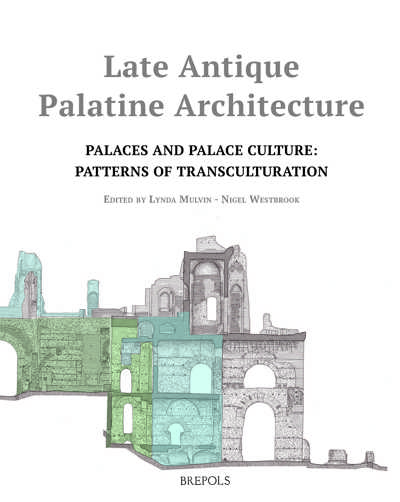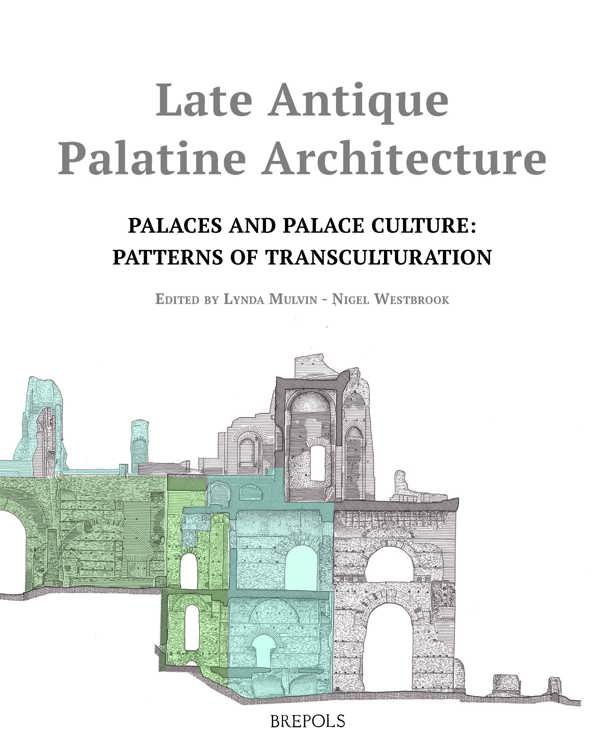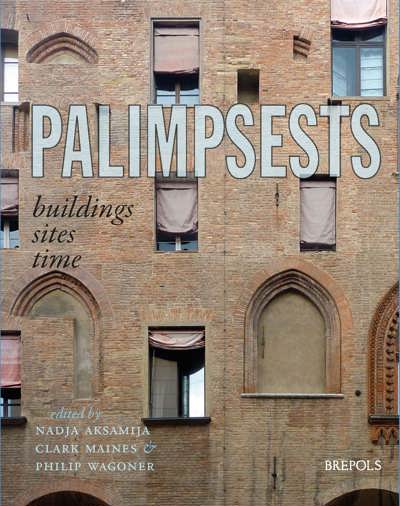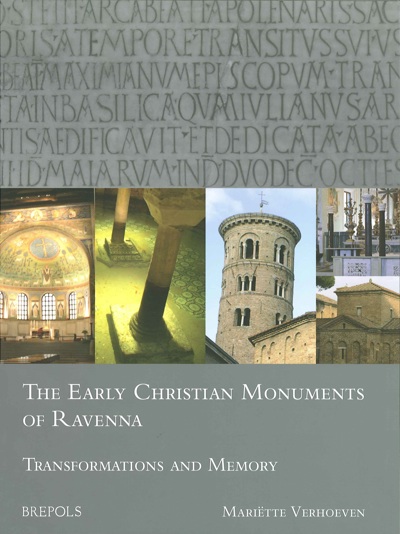
Late Antique Palatine Architecture
Palaces and Palace Culture: Patterns of Transculturation
Lynda Mulvin, Nigel Westbrook (eds)
- Pages: 213 p.
- Size:220 x 280 mm
- Illustrations:110 b/w, 50 col., 10 tables b/w.
- Language(s):English
- Publication Year:2020
- € 95,00 EXCL. VAT RETAIL PRICE
- ISBN: 978-2-503-57472-1
- Paperback
- Available
Late Antique cultural change methodologies
« (…) cet ouvrage permet d’aborder de façon convaincante cette question peu souvent traitée de la « déromanisation » de l’architecture européenne. Si l’accent est clairement mis sur le moment de rupture que constituent les résidences impériales de la période tétrarchique, le phénomène suscite des visions encore sensiblement différentes. Tout cela demande d’élargir notre vision même du monde romain et de ses transformations permanentes, souvent en lien avec des « influences » extérieures que l’on a trop souvent tendance à négliger. » (Xavier Lafon, dans Histara, 25/02/2021)
Lynda Mulvin: expertise in classical antiquity and architecture; Nigel Westbrook: expertise in interpreting late antique cross cultural changes in architecurre
Late antique palaces and palace culture served as the loci of dramatic shifts in architecture and design, as well as urban planning, public works and patronage, in the imperial cities of Rome and Constantinople, and the first palatine centres of the Holy Roman Empire. This volume provides a wealth of detailed information and perspectives on late antique and early medieval design practices, with emphasis on the new spatial configurations and their decorative schema.
The essays in this collection provide original, ground-breaking narratives on palatine architecture and culture in this period, integrating cross-cultural dialogues from Rome as centre of imperial palace architecture with details of late palace embellishments and the ceremonial usage which was brought to the fore, as the discussion shifts to the new imperial capital of Nova Roma, Constantinople, and then to the Carolingian centres via Rome and Ravenna.
A parallel discussion emerges, where prototypes for palaces and ceremonial courts were imported and reinterpreted through a process of citation. Principal interest resides in the contrasts of palatial and residential complexes, intended to demonstrate new ceremonies and the practices enacted within and through them. The focus of the volume is then shifted to eastern and western provincial and rural high-status residences and landscapes of power, examining the relationships between palaces and late Roman villas and the court and court culture, ultimately revealing a political agenda in use through and in the language of architecture.
Introduction
Preface in commemoration of Ulrike Wulf-Rheidt — Adolf Hoffmann
The Palace of the Roman Emperors on the Palatine in Rome — Ulrike Wulf-Rheidt
Magna Mater and the pignora imperii: Creating Places of Power — Sarah Wilson
The Political Power of the Palace: The Residences of Maxentius in Rome — Elisha Ann Dumser
Adapting to a New Concept of Sovereignty: Some Remarks on Tetrarchic Palace Architecture — Dr Verena Jaeschke
Diocletian’s Palace: Villa, Sacrum Palatium, Villa-Cum-Factory, Chateau? — Josko Belamaric
Architecture, Innovation and Economy in the Late Roman Danube-Balkan Region: Palaces and ‘Productive Villas’ from Pannonia — Lynda Mulvin
The porticus post scaenam of Lugdunum Convenarum — Daniel M. Millette
The Question of the Survival of Roman Architectural Traditions within the Byzantine Great Palace — Nigel Westbrook
‘In More Romano’: Medieval Residences of the Holy Roman Empire — Bernd Nicolai
Bibliography




